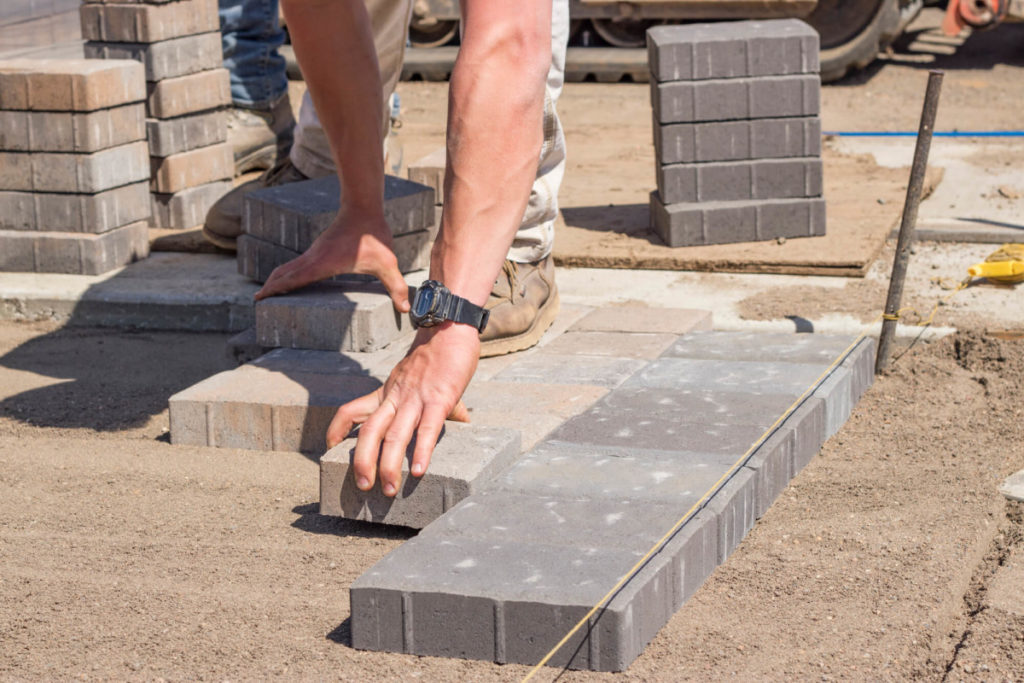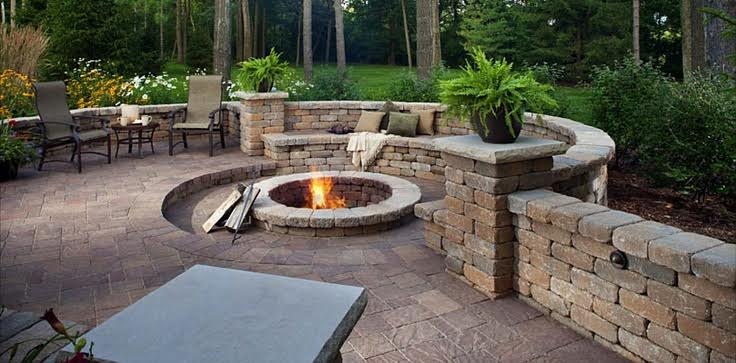Building durable hardscapes in Port Allen requires careful material selection and proper installation techniques that withstand Louisiana’s humid subtropical climate. The key to longevity lies in choosing materials rated for high moisture exposure, implementing proper drainage systems, and accounting for soil expansion during wet seasons. Professional installation with appropriate base preparation and grading ensures your investment performs well for decades.
Success depends on understanding local climate challenges, selecting proven materials like concrete pavers or natural stone, and following established construction methods. This guide provides detailed information to help property owners make informed decisions about hardscape projects that deliver lasting value.
Essential Materials for Louisiana Hardscapes
Different hardscape materials perform uniquely in Port Allen’s climate conditions. Understanding each option’s characteristics helps determine the best fit for specific applications and budgets.
Material Performance Comparison
| Material Type | Durability Rating | Moisture Resistance | Maintenance Level | Initial Cost | Lifespan |
| Concrete Pavers | Excellent | High | Low | Moderate | 25-30 years |
| Natural Stone | Outstanding | Very High | Moderate | High | 50+ years |
| Brick | Good | Moderate | Moderate | Moderate | 20-25 years |
| Stamped Concrete | Good | Moderate | Low | Low | 15-20 years |
| Interlocking Blocks | Excellent | High | Low | Moderate | 30-35 years |
Bonus Tip: Choose materials with absorption rates below 3% for optimal performance in Louisiana’s high-humidity environment.
Concrete pavers offer the best balance of durability and cost-effectiveness for most Port Allen properties. Their interlocking design allows for ground movement without cracking, while their manufactured consistency ensures reliable performance across varying weather conditions.
Natural stone provides superior longevity but requires higher upfront investment. Limestone and sandstone varieties work particularly well in Louisiana, offering natural beauty that improves with age while maintaining structural integrity through seasonal changes.
Technical Specifications for Climate Adaptation
Port Allen’s specific environmental conditions require hardscapes designed to handle significant moisture exposure and temperature fluctuations. Understanding these technical requirements prevents common failure points.
Climate Adaptation Requirements
| Specification | Standard Requirement | Port Allen Recommendation | Reason |
| Base Depth | 4-6 inches | 6-8 inches | Clay soil expansion |
| Drainage Grade | 1-2% slope | 2-3% slope | High rainfall volume |
| Joint Sand Type | Standard polymeric | Premium polymeric | Humidity resistance |
| Compaction Rate | 95% density | 98% density | Soil stability |
| Edge Restraint | Standard concrete | Reinforced concrete | Ground movement |
The region receives approximately 60 inches of annual rainfall, with peak precipitation occurring during summer months. This moisture level requires enhanced drainage systems and water-resistant materials to prevent structural damage over time.
Bonus Tip: Install French drains beneath hardscapes in areas with poor natural drainage to prevent water accumulation and foundation issues.
Foundation and Base Preparation Methods
Proper foundation work determines hardscape longevity more than any other factor. Port Allen’s clay-heavy soils present unique challenges that require specific preparation techniques.
Excavation depth should account for both base material and potential soil expansion. Clay soils can expand up to 10% during wet periods, creating significant pressure on hardscape surfaces. Professional Experts typically excavate 2-3 inches deeper than standard recommendations to accommodate this movement.
Base material selection impacts long-term stability. Crushed limestone aggregate compacts well and provides excellent drainage properties. The material should be installed in 2-inch lifts with thorough compaction between layers to achieve optimal density.
Geotextile fabric installation between soil and base material prevents mixing while allowing water passage. This barrier maintains base integrity over time and reduces maintenance requirements significantly.
Installation Process and Quality Standards
Professional installation follows specific sequences that ensure structural integrity and longevity. Each step builds upon previous work to create stable, durable surfaces.
Site preparation begins with accurate grading to establish proper water flow patterns. Slopes should direct water away from structures while maintaining comfortable walking surfaces. Grade changes exceeding 2% may require stepped installations or retaining wall integration.
Compaction equipment must achieve consistent density throughout the base layer. Plate compactors work effectively for most residential projects, while larger installations may require vibratory rollers for optimal results. Each pass should overlap by 6 inches to eliminate soft spots.
Material installation proceeds systematically from established reference points. Starting corners or edges should be perfectly aligned since subsequent materials follow these initial placements. Professional installers check alignment frequently using string lines and levels.
Bonus Tip: Schedule installation during dry periods when soil conditions remain stable and materials can cure properly without weather interference.
Things to Consider Before Making a Decision
Several factors influence hardscape project success beyond material selection and installation quality. Evaluating these elements upfront prevents costly modifications later.
Property drainage patterns affect hardscape placement and design requirements. Observe water flow during heavy rainfall to identify potential problem areas. Existing drainage issues should be resolved before hardscape installation begins.
Utility line locations must be identified and marked before excavation starts. Contact Louisiana 811 at least 72 hours before breaking ground to ensure safe digging practices. Underground utilities may require design modifications or alternative installation methods.
Future landscape plans should be considered when designing hardscapes. Mature tree root systems can damage nearby hardscapes, while irrigation systems need access for maintenance and modifications. Planning these interactions prevents conflicts as landscapes develop.
Budget considerations extend beyond initial installation costs. Factor in long-term maintenance requirements, potential repairs, and eventual replacement needs when evaluating options. Higher-quality materials often provide better value through extended service life.
Local permit requirements vary by project scope and location. Contact the West Baton Rouge Parish planning department to determine if permits are needed for your specific project. Some installations require professional engineering approval.
Common Questions About Hardscape Construction
How long does proper installation take? Most residential hardscape projects require 3-7 days for completion, depending on size and complexity. Weather conditions and site preparation requirements can extend timelines. Professional Experts provide realistic schedules based on specific project details.
What maintenance do hardships require? Regular cleaning and occasional joint sand replacement maintain appearance and performance. Annual inspection identifies minor issues before they become major problems. Sealing may be recommended every 3-5 years depending on material type and exposure conditions.
Can hardscapes be installed year-round? Louisiana’s climate allows installation during most months, though extremely wet periods should be avoided. Fall and winter months often provide optimal conditions with lower humidity and reduced rainfall likelihood.
How do hardscapes handle tree roots? Proper installation includes root barriers and adequate spacing from existing trees. Mature trees require special considerations to prevent root damage to hardscape surfaces. Professional assessment determines appropriate placement strategies.
Cost Analysis and Value Considerations
Hardscape investments typically return 70-80% of their cost in property value increases. The actual return depends on material quality, installation craftsmanship, and design integration with existing landscape features.
Labor costs represent 60-70% of total project expenses in the Port Allen market. Material costs vary significantly based on selection, with premium options costing 2-3 times more than standard alternatives. Transportation costs for specialty materials add 10-15% to base prices.
Financing options include contractor payment plans, home equity loans, and personal loans. Many Experts offer seasonal promotions that reduce overall project costs. Bundling multiple landscape projects often provides economies of scale.
Ready to Create Lasting Outdoor Spaces
Building durable hardscapes requires careful planning, quality materials, and professional installation techniques adapted to Louisiana’s unique climate conditions. Success comes from understanding local challenges and implementing proven solutions that deliver long-term performance.
The investment in properly constructed hardscapes enhances both property value and outdoor enjoyment for decades. Focus on materials suited to high-moisture environments, ensure proper drainage design, and work with experienced Experts familiar with local soil conditions.
Apply these insights to your property: Schedule your hardscape consultation with All Seasons Lawn Care & Landscaping. Our local expertise ensures your project succeeds from planning through completion, delivering the lasting outdoor spaces you envision.
All Seasons Lawn Care & Landscaping
(225) 276-8658
info@allseasonslandscapingla.com
 Frequently Asked Questions
Frequently Asked Questions
What’s the best hardscape material for Port Allen’s climate? Concrete pavers and natural stone perform exceptionally well in Louisiana’s humid conditions. Both materials resist moisture damage while maintaining structural integrity through seasonal temperature changes.
How deep should hardscape foundations be in clay soil? Foundation depth should be 6-8 inches minimum to accommodate clay soil expansion. Additional depth may be required in areas with poor drainage or significant slope changes.
Do hardships require special permits in Port Allen? Most residential hardscape projects don’t require permits, but larger installations or those affecting drainage patterns may need approval. Contact West Baton Rouge Parish planning department for specific requirements.
How long do professionally installed hardscapes last? Quality hardscapes installed with proper techniques typically last 25-30 years or longer. Natural stone installations can exceed 50 years with appropriate maintenance and care.
What’s the ideal time of year for hardscape installation? Fall and winter months provide optimal conditions with lower humidity and reduced rainfall. Installation can occur year-round but should avoid periods of heavy or prolonged precipitation.
Reviewer:
Sophie Williams looked over this post and brought 7 years of field experience to her suggestions, helping ensure the content stays relevant to business owners and practical for everyday use.



